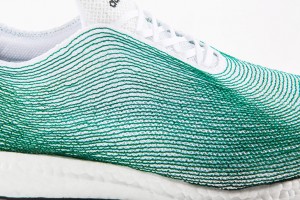Chelsea and I spoke at length while I was writing Plastic, Ahoy! Investigating the Great Pacific Garbage Patch, but I took a moment to catch up with her last week–over four and a half years after the SEAPLEX expedition. Chelsea earned her Ph.D. in marine ecology and ecotoxicology (that’s a good word for students to look up) and currently works for the Aquatic Health Program at the University of California, Davis.
Patricia Newman: How did the 2009 SEAPLEX voyage affect your career in science?
Chelsea Rochman: I feel very lucky to have been granted the opportunity to be part of the SEAPLEX cruise. It was hugely invaluable from an academic standpoint, but also from the standpoint of a person passionate about the environment. For me, it was the beginning of a string of opportunities to travel the world and share my knowledge with people globally and gain collaboration globally.
The SEAPLEX cruise brought a lot of attention regarding the science of plastic debris to a mass audience. It helped spring an interest in scientists, non-profits and government agencies globally. As such, I think it helped me receive funding to carry out my science on this topic throughout the whole of my PhD and beyond. I was also granted opportunities to be involved in policy meetings and advise and collaborate with non-profit organizations on the issue. I personally did not collect any samples that were part of my dissertation research on this cruise, but truly believe that this trip laid a large part of the foundation for my career and for that I’m incredibly thankful. I also gained some great friends and collaborators. To this day, I am great friends with Miriam and continue to work with Doug Woodring. In addition, it was an opportunity of a lifetime to be aboard a vessel in the middle of the ocean and experience nature so far from the influence of humans. At the same time it was heartbreaking to see our waste so far from land and realize the influence we can have even in such remote places on Earth. This will always motivate me to continue on in my field for decades to come.
PN: In your opinion, what are the next steps to studying ocean plastic?
CR: I think it has become clear that plastic debris contaminates the environment and wildlife globally. What is less understood is the impact this debris has on the biosphere (i.e. ecological impacts, effects on human health). These are the next big research questions.
PN: How does your current work relate to ocean plastic? Where do you hope that work will take you?
CR: I am currently doing research investigating how chemicals from plastic debris move through the foodweb and magnify in animals at higher trophic levels. I am funded as a postdoc under NOAA’s Marine Debris Program to do this work. In September I will become a Smith postdoctoral fellow for the Society of Conservation Biology where I will study the sources, sinks and impacts of plastic debris in large urban watersheds. I hope my work will continue to open doors to further research on this topic and that the knowledge will be used to inform policy and help mitigate the contamination of plastic debris in the environment.
PN: What is the most important finding (in your opinion) to come out of your SEAPLEX voyage?
CR: SEAPLEX was hugely influential in the policy and activist arena. I understand that very important findings were created, i.e. publications regarding the distribution of plastic debris in the region and ingestion of plastic in fish. However, I think the most important outcome of this cruise was the flurry of concern it created around the issue in policy-makers, researchers and non-profit organizations. Thus, Plastic, Ahoy! is part of that success story and will continue to help us reach a larger audience. Education is crucial and I believe it makes a difference. This book will fall into the hands of our future scientists, policy makers and activists. That is hugely important.
PN: What encouragement would you give to elementary, middle, or high school students interested in science?
CR: Follow your heart and reach for your goal. It will not always be easy, but remember that if you put your mind to it, WORK HARD and are persistent, you can get there. Science is fun, rewarding and influential. I encourage any young person to come and expand our knowledge. There is something very powerful about creating knowledge!





Leave a Reply
Your email is safe with me.